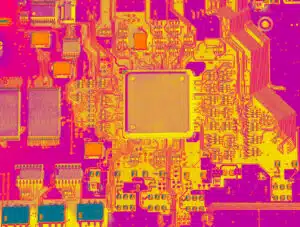Most engineers involved with temperature measurement know there are several methods for measuring temperatures of fluids and solids. The oldest and most common method for measuring the temperature of a fluid such as air is the standard mercury-in-glass thermometer. However, this is not acceptable for measuring surface temperatures of solid objects. For surface temperature … [Read more...]
Simulation of Solder Fatigue Effects on Typical BGA Package due to Material and Temperature Variations – Part 2
Abstract The past two decades have seen many approaches to solder fatigue and solder joint life published. This subject has proved difficult as various failure mechanisms are proposed and examined. While these theoretical bases are discussed, it often leaves the end developer in a difficult situation as to how to apply an accurate simulation approach to fatigue failure for a … [Read more...]
Radiation Basics: Making Sense of Emissivity & Absorptivity
Introduction This is the second installment in a series of articles that aims to explore a range of practical topics on radiation that are relevant to those of us focused on electronics cooling and thermal design. The last article [3] provided guidance regarding when radiation matters, with examples being natural convection environments, space applications, solar collectors, … [Read more...]
Mitigating Flow Maldistribution in Data Center Two-Phase Cooling Systems with Flow Restrictors
By Serdar Ozguc, Qingyang Wang, Akshith Narayanan, Richard W. Bonner III The Need for Two-Phase Cooling in Data Centers Power usage in data centers account for 1.8% of the overall electricity expenditure in the United States [1] and the cooling infrastructures make up 50% of the total energy consumption of the data centers [2]. Power consumption translates to high … [Read more...]
Augmenting Development of Electronics Cooling Technologies with Machine Learning Tools – a Heat Pipe System Example
The traditional pathway for development of thermal management technologies for electronics has been to analyze using heat transfer theory augmented by computational tools such as finite difference or finite element methods, CFD tools, or thermal management system simulation tools, sometimes in tandem with prototype system fabrication and testing. Combining recently available … [Read more...]
- « Previous Page
- 1
- 2
- 3
- 4
- …
- 37
- Next Page »










